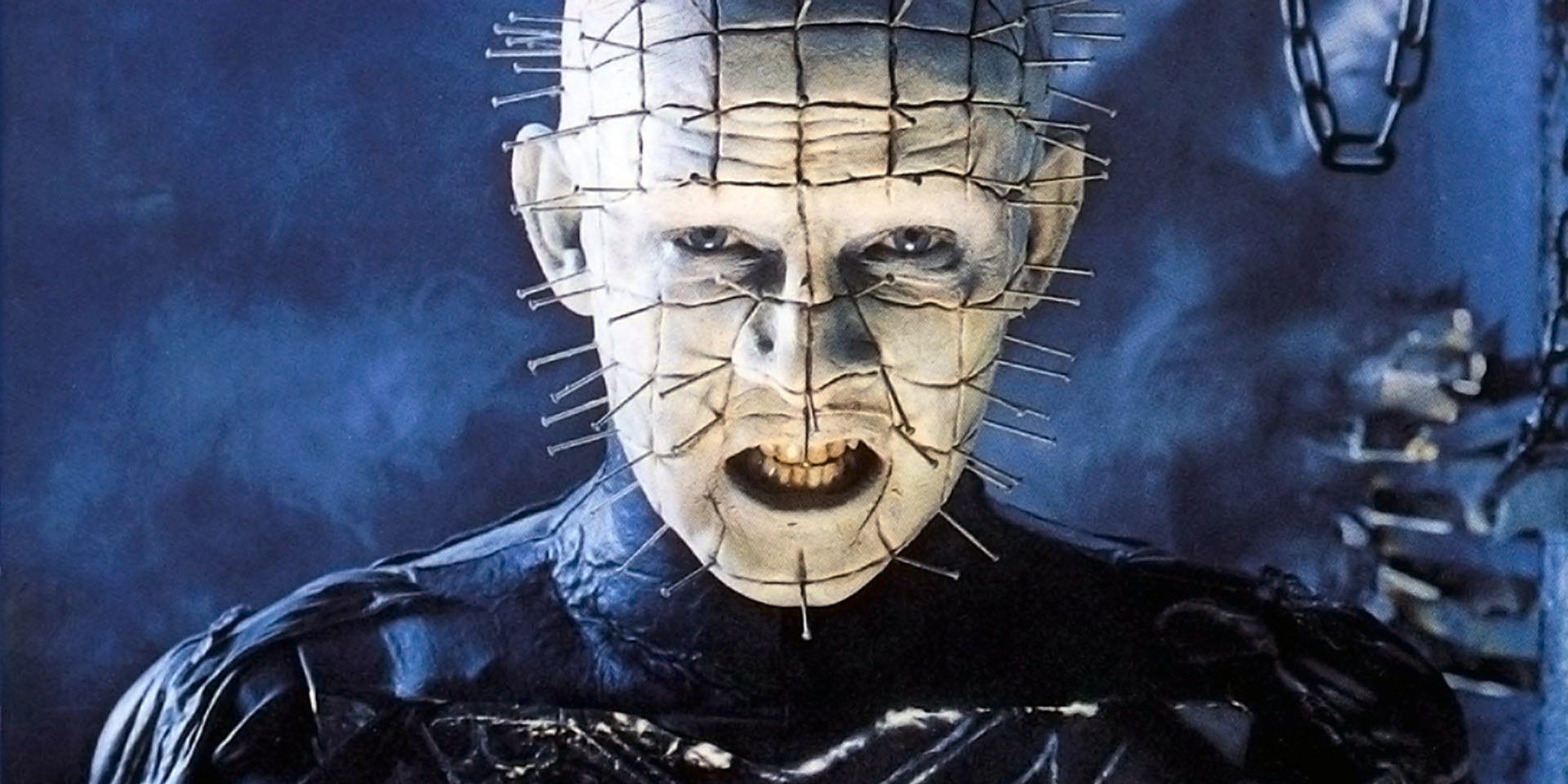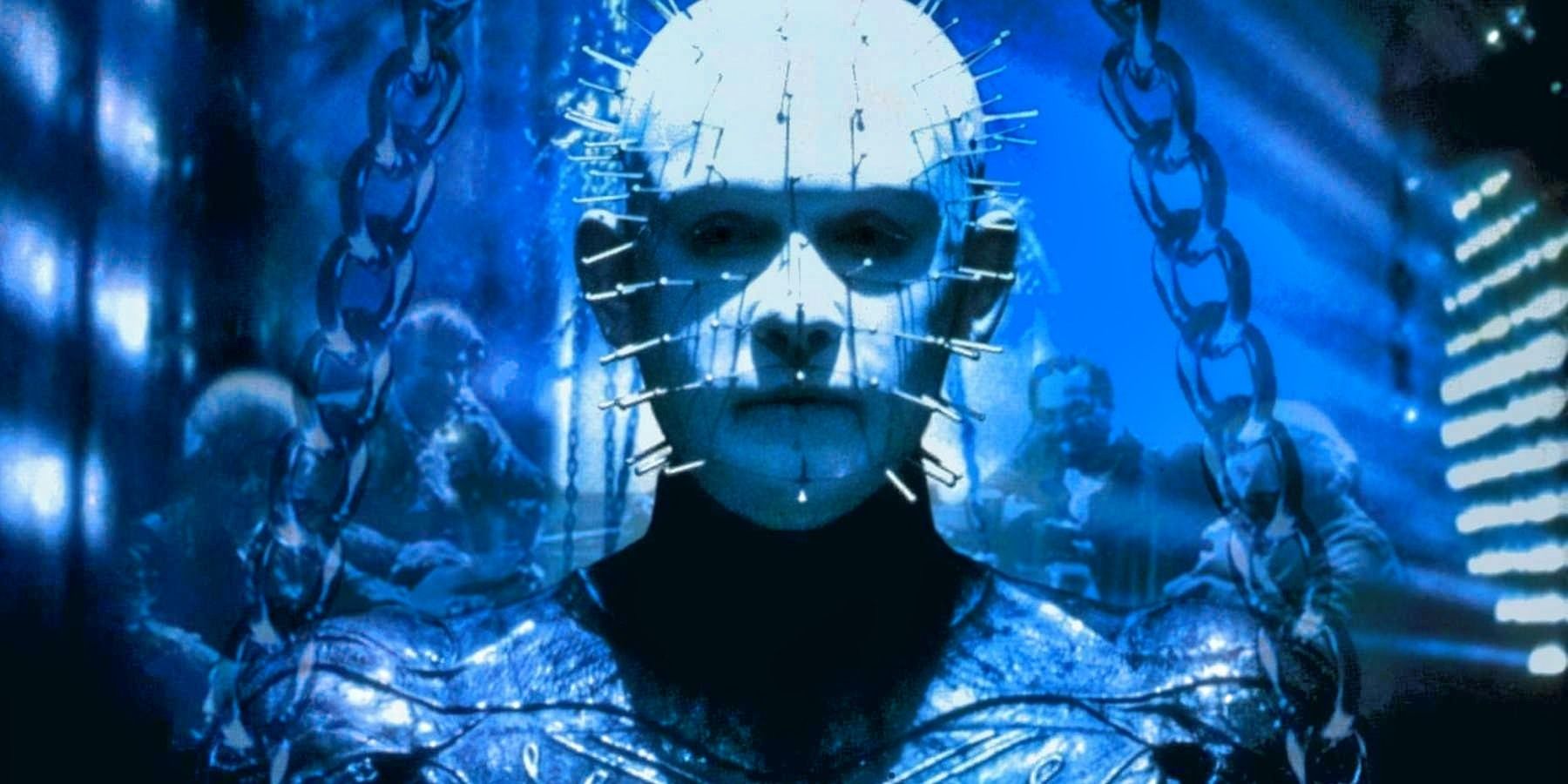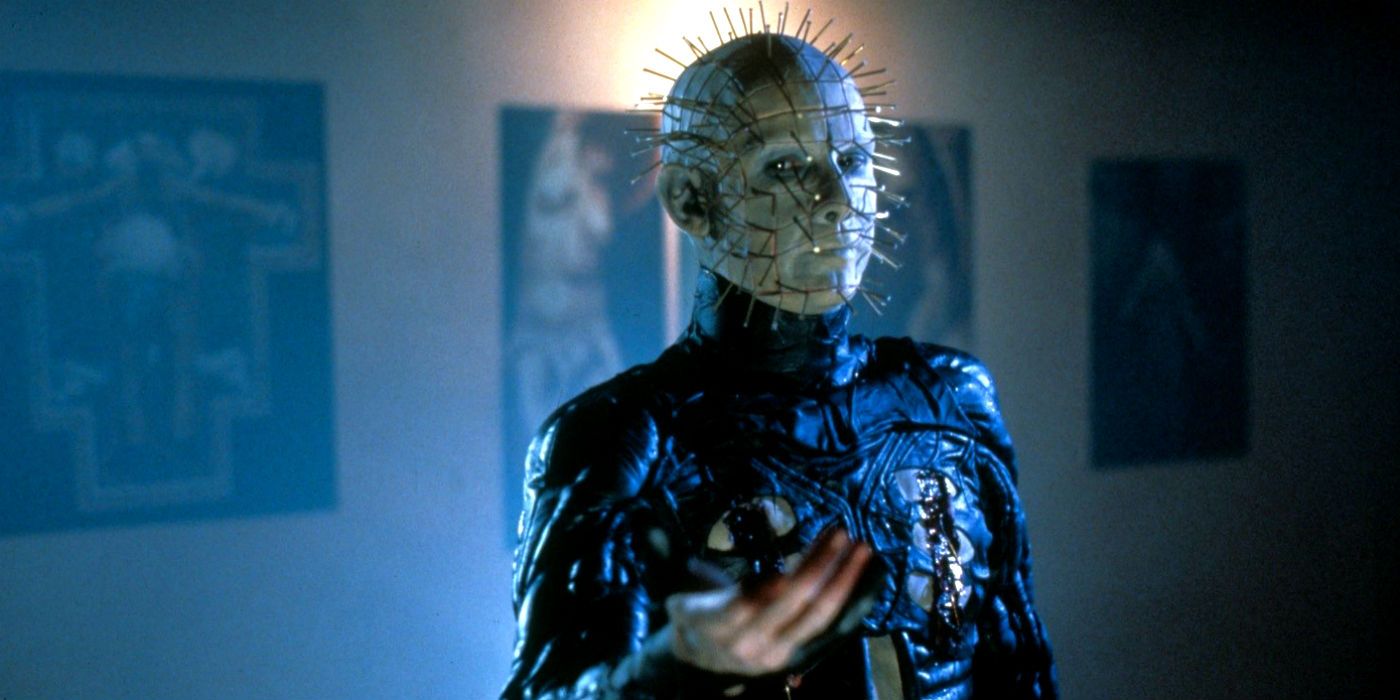In Hellraiser, Pinhead isn't technically a villain, depending on which definition of the term "villain" is used. In some ways, Pinhead is a villain in Hellraiser; in other ways, he is not. This is because, like most literary terms, the word "villain" has many definitions. In general, there are two main definitions of the term: a primary definition and a secondary definition.
In the primary definition, a villain is an evil character who opposes a hero, usually a good character. Halloween's Michael Myers, Aliens' Carter Burke, and Raised by Wolves' Marcus would all be examples of villains according to this primary definition. They are all evil characters because they commit immoral acts like murder and attempted murder. Pinhead is not a villain according to this definition, because he does not commit immoral acts. Since he is a demonic creature - a Cenobite - from another dimension simply behaving according to his nature, he is technically incapable of murder and is no more evil than a mosquito or a poisonous snake that inadvertently kills a human.
Pinhead's attack on Kirsty Cotton (Ashley Laurence) can be seen as the supernatural equivalent to a rare instance of a lion attacking a human. The secondary definition of the term "villain" is broader than the primary. According to this definition, a villain is any character that simply causes something bad, not necessarily something evil, but something harmful or unwelcome. The Xenomorph in Alien, the Thing in The Thing, and the Young Boy in Vivarium are all villains according to this secondary definition. They cause people pain and even death, but unlike villains in the primary definition, they are not evil. Rather, they are neutral. They cause pain and death because it's their nature; therefore, their gruesome acts are not immoral.
Why Pinhead Isn't A Villain In Hellraiser
While according to that secondary definition, Pinhead is a villain, since he's not evil, he doesn't operate like a bad guy in the classical sense. He even speaks to this neutral aspect of his character when he tells Kirsty that he and the other Cenobites are "Demons to some. Angels to others." Therefore, an encounter with Pinhead is akin to being caught in a natural disaster - neither evil nor good. Additionally, the term "villain" is often mistakenly understood as a synonym for the term "antagonist." Pinhead is also not Hellraiser's primary antagonist, those are clearly immoral villains Frank and Julia, who almost became the queen of Hell. That said, Pinhead can be considered to be a secondary antagonist in the movie because he temporarily becomes Kirsty's main opponent once she solves the box. In Hellraiser, Pinhead and the other Cenobites should be considered more like a force of nature than true villains in either definition of the word.
Why Pinhead Turns Evil In Hellraiser 3
While Pinhead isn't a villain in the first two Hellraiser movies — he's a neutral representative of Hell — he switches to being an unequivocal, full-blown bad guy in Hellraiser 3: Hell on Earth. This is due to Pinhead being killed by Dr. Channard after the latter became a powerful, new, Leviathan-backed Cenobite in Hellbound: Hellraiser 2. When Pinhead died, after having been reminded by Kirsty Cotton of his human origin story as Elliot Spencer, Pinhead and Spencer were separated into two souls. Without Spencer's human side around to keep Pinhead's hunger for carnage in check, the Hell Priest became fully uninhibited, with no regard for neutrality and the rules he used to strictly follow. As a result, Pinhead becomes more of a traditional villain in the Hellraiser franchise.



